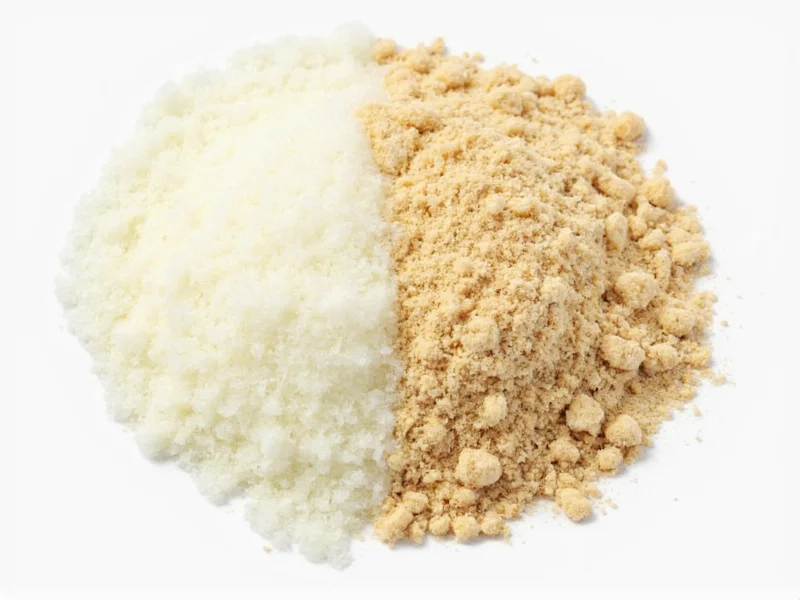One and a half teaspoons of onion powder equals half a medium-sized fresh onion. This precise conversion ratio ensures your recipes maintain the intended flavor profile when substituting dried onion for fresh.
When you're in the middle of cooking and realize your recipe calls for half an onion but you only have onion powder available, knowing the exact conversion is crucial for recipe success. This common kitchen dilemma requires more than just a rough estimate—your dish's flavor balance depends on getting the measurement right.
Understanding Onion Powder to Fresh Onion Conversion
The standard conversion ratio between fresh onions and onion powder is essential knowledge for any home cook. Professional chefs and culinary experts consistently recommend that 1 tablespoon (3 teaspoons) of onion powder equals one medium fresh onion. This ratio accounts for the dehydration process that concentrates the onion's flavor while removing moisture.
When converting specifically for half an onion, the calculation becomes straightforward:
| Measurement | Equivalent Onion Powder |
|---|---|
| 1 medium fresh onion | 1 tablespoon (3 teaspoons) |
| Half a medium fresh onion | 1.5 teaspoons |
| Quarter of a medium fresh onion | 0.75 teaspoons (3/4 teaspoon) |
Factors That Affect Onion Powder Conversion Accuracy
While the 1.5 teaspoon measurement serves as an excellent starting point for substituting half an onion, several factors can influence the perfect conversion for your specific recipe:
Onion Size Variability
"Medium" onions can range from 5-8 ounces in weight. If you're working with particularly large or small onions, adjust your powder measurement accordingly. For a smaller half-onion portion, start with 1.25 teaspoons; for a larger portion, use up to 1.75 teaspoons.
Onion Powder Quality Differences
Not all onion powders are created equal. Premium brands often have more concentrated flavor than generic varieties. When using a new brand, begin with the standard 1.5 teaspoon measurement, then taste and adjust as needed before adding additional liquid to your recipe.
Recipe Type Considerations
The cooking method significantly impacts how onion powder performs as a substitute:
- Slow-cooked dishes: Use the full 1.5 teaspoons as flavors have time to meld
- Raw applications (like salad dressings): Reduce to 1 teaspoon as raw powder can be overpowering
- Baked goods: Use 1.25 teaspoons to prevent bitter notes from developing
Practical Measurement Tips for Perfect Substitution
Accurate measurement makes all the difference when converting fresh ingredients to dried forms. Follow these professional kitchen techniques:
Proper Measuring Technique
Always spoon onion powder into your measuring spoon rather than scooping directly from the container. This prevents compaction that leads to over-measurement. Level off the top with a straight edge for precision—don't shake or tap the spoon, which compresses the powder.
When to Add Onion Powder
Unlike fresh onions that need time to cook down, onion powder dissolves quickly. For best results:
- Add to dry ingredients when baking
- Mix with liquids early in the cooking process for sauces and soups
- Combine with oil first when sautéing to prevent burning
Flavor Profile Differences and Adjustments
Understanding the flavor differences between fresh onions and onion powder helps you make informed substitutions. Fresh onions provide moisture, texture, and a sharper bite that mellows when cooked. Onion powder delivers concentrated flavor without the water content, creating a different culinary experience.
When substituting onion powder for fresh:
- Add 1-2 teaspoons of water per tablespoon of powder to compensate for lost moisture
- Consider adding a pinch of sugar to balance the more intense flavor
- For complex dishes, supplement with a small amount of onion salt (reducing overall salt elsewhere)
Common Substitution Mistakes to Avoid
Many home cooks make these critical errors when substituting onion powder for fresh onions:
- Using too much - Onion powder is more potent by volume, leading to overpowering dishes
- Not adjusting liquid content - Recipes may become too dry without moisture compensation
- Adding too late in cooking - Powder needs time to hydrate and integrate flavors
- Using in raw applications without dilution - Creates an unpleasantly sharp taste
For dishes where texture matters—like fresh salsas or onion rings—onion powder simply won't work as a substitute. Reserve this conversion for cooked applications where flavor is the primary concern.
When Fresh Onion Is Irreplaceable
While the onion powder conversion works well for many recipes, certain dishes absolutely require fresh onions for authentic results:
- Fresh salsas and pico de gallo
- Ceviche and other raw fish preparations
- Caramelized onion toppings
- Onion rings and fried onion applications
- Raw onion garnishes for tacos or burgers
In these cases, no amount of onion powder can replicate the texture, moisture content, and complex flavor development of fresh onions. Keep a few fresh onions in your pantry for these specific applications while relying on powder for convenient storage and consistent flavor in cooked dishes.











 浙公网安备
33010002000092号
浙公网安备
33010002000092号 浙B2-20120091-4
浙B2-20120091-4